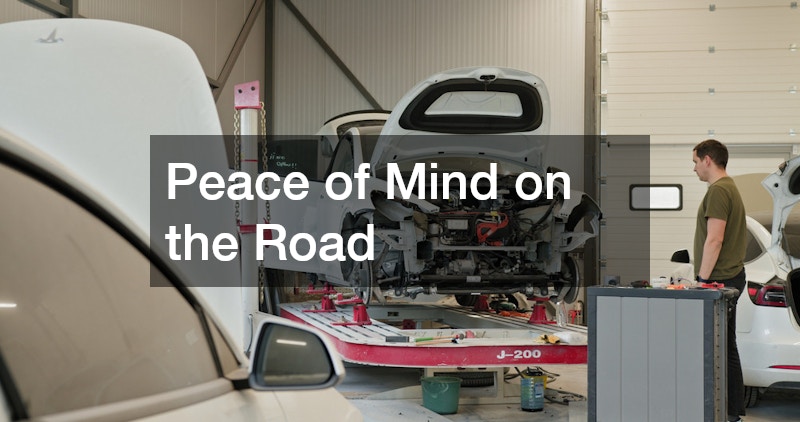When a vehicle is involved in a collision, the aftermath can be overwhelming. From insurance claims to transportation concerns, there are many challenges to face. However, one of the most critical steps in the recovery process is ensuring that the vehicle receives proper auto collision repair. This process not only restores the car’s appearance but also plays a key role in safety, performance, and long-term reliability.
What Is Auto Collision Repair?
Auto collision repair refers to the professional restoration of a vehicle that has sustained damage in an accident. This process goes far beyond cosmetic fixes.
While dents, scratches, and paint damage are the most visible issues, there can be hidden damage to the vehicle’s frame, suspension, or mechanical components. Certified technicians use specialized tools and methods to bring the vehicle back to manufacturer standards, ensuring it functions as it did before the accident.
The Safety Factor: More Than Just Looks
Many people mistakenly believe that if a car looks fine on the outside, it must be safe to drive. Unfortunately, that’s not always true. Collisions—even minor ones—can affect essential safety features like airbags, crumple zones, and electronic sensors. If these components aren’t functioning properly, it could put drivers and passengers at serious risk in future accidents.
Auto collision repair ensures that these hidden systems are inspected and restored. Technicians use diagnostic equipment to assess the internal health of the vehicle, checking everything from alignment and braking systems to electronic features and structural integrity.
Frame and Structural Repairs
The frame of a car acts as the skeleton that supports the entire vehicle. In moderate to severe collisions, the frame can bend, twist, or become misaligned. A compromised frame affects how the car drives, handles, and protects passengers during impact.
Repair shops equipped with frame-straightening machines can correct these issues with precision. Laser measuring tools help assess the extent of the damage, ensuring repairs are completed with accuracy and according to the vehicle’s original specifications. This kind of structural work is essential for maintaining a vehicle’s performance and safety standards.
Paint Matching and Finishing
After the mechanical and structural work is complete, the final step in the auto collision repair process is restoring the vehicle’s appearance. This includes sanding, priming, painting, and clear-coating. Modern collision centers use computerized paint-matching systems to replicate the vehicle’s original color perfectly, leaving no sign of the previous damage.
The goal is to return the vehicle to a pre-accident condition—not just functionally, but visually as well. A well-finished repair helps retain the car’s value and gives owners the confidence to get back on the road.
The Role of Certified Technicians
Auto collision repair is a highly technical trade that requires skill, experience, and ongoing training. Reputable repair centers employ certified technicians who are trained in the latest repair methods and technologies. These professionals are familiar with the engineering behind different makes and models and follow manufacturer guidelines to ensure every repair meets strict standards.
In many cases, vehicles today are built with high-strength steel, aluminum, and composite materials that require specific tools and knowledge to repair properly. Working with certified professionals ensures the job is done correctly and safely.
Insurance and Documentation
While avoiding cost discussion, it’s worth noting that proper documentation is essential when dealing with vehicle insurance and future resale. Most reputable repair shops provide detailed repair orders that outline the work completed, parts replaced, and certifications used. This paperwork is not only important for insurance purposes but also serves as proof of the vehicle’s condition for potential buyers down the road.
Even if the damage seems minor, skipping or delaying repairs can lead to bigger problems over time. Moisture can get into scratches or cracks, leading to rust. Misaligned wheels or suspension issues can wear out tires or stress other components unnecessarily.
Protecting Vehicle Value
One of the main reasons to invest in timely auto collision repair is to protect the resale or trade-in value of your vehicle. Cars that have visible damage—or worse, unrepaired structural issues—often lose value rapidly. On the other hand, a car that’s been professionally repaired and maintained will retain much more of its value, making it a smarter financial decision in the long run.
Peace of Mind on the Road
Perhaps the most important benefit of proper auto collision repair is peace of mind. Knowing that your vehicle has been professionally inspected and restored gives you the confidence to drive without worry. It means that safety systems are intact, the car handles properly, and there’s no hidden damage that could cause problems in the future.
Getting your vehicle repaired after an accident isn’t just about aesthetics—it’s a crucial step in ensuring safety, reliability, and value. From restoring structural integrity to ensuring paint perfection, auto collision repair is a specialized service that every driver should take seriously. Whether the damage is minor or major, working with a certified repair shop ensures your vehicle is returned to optimal condition, ready to protect you and perform on the road once again.

